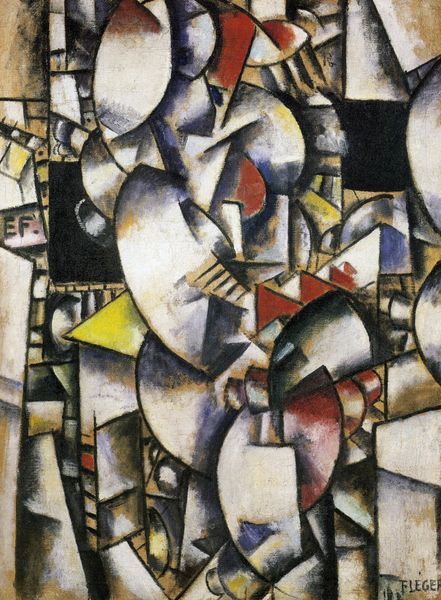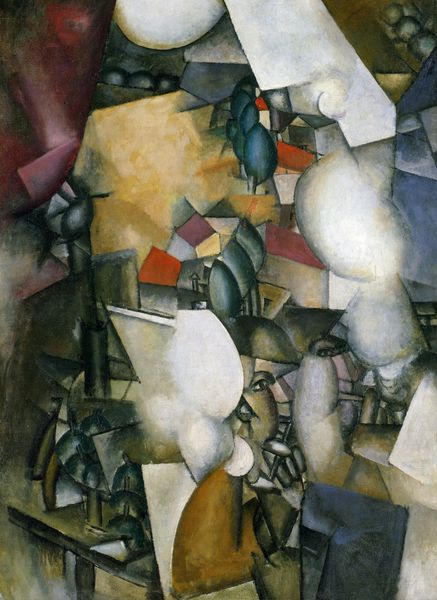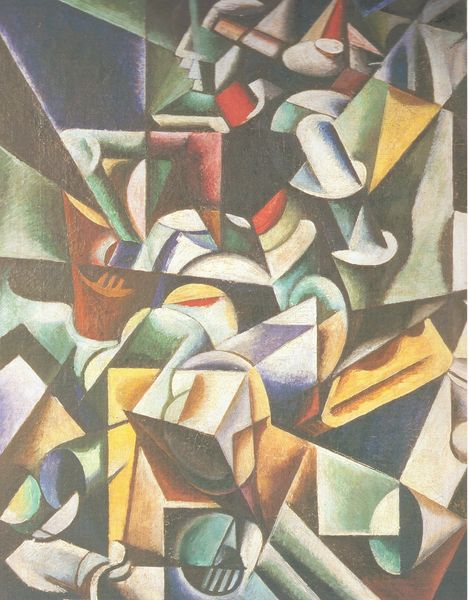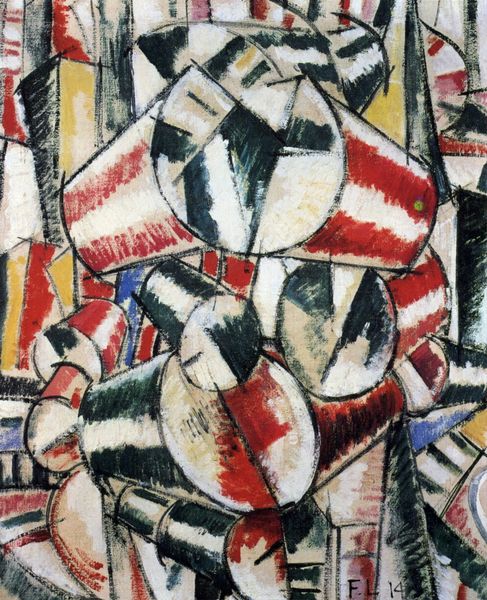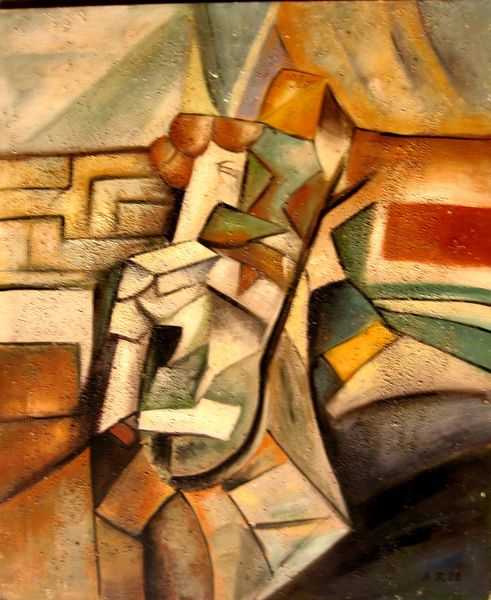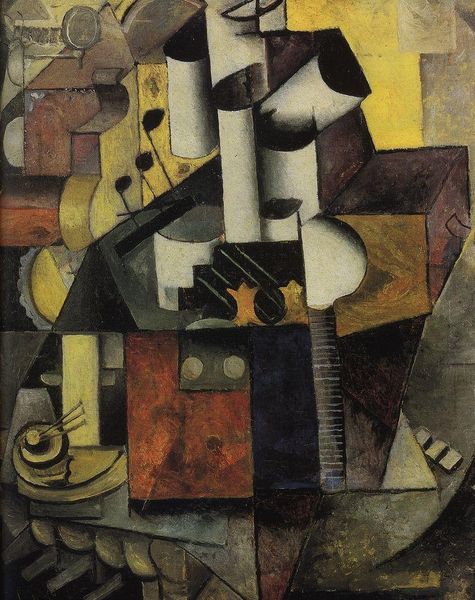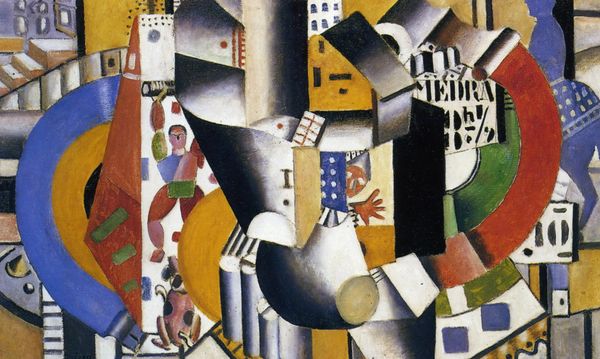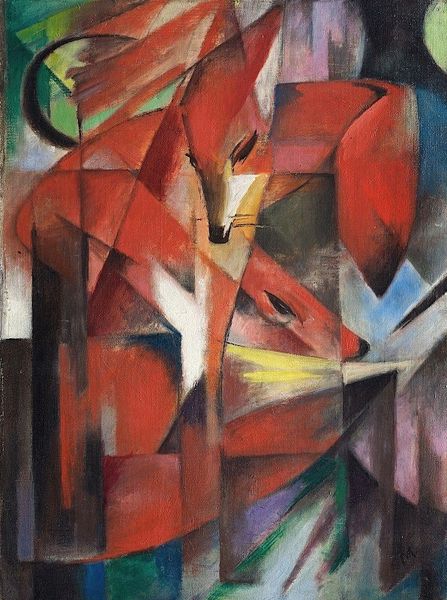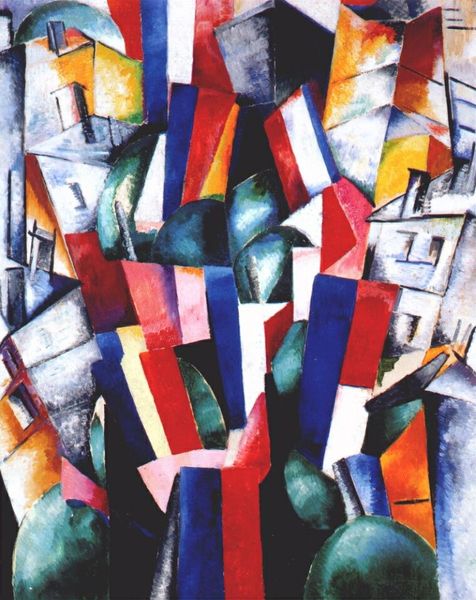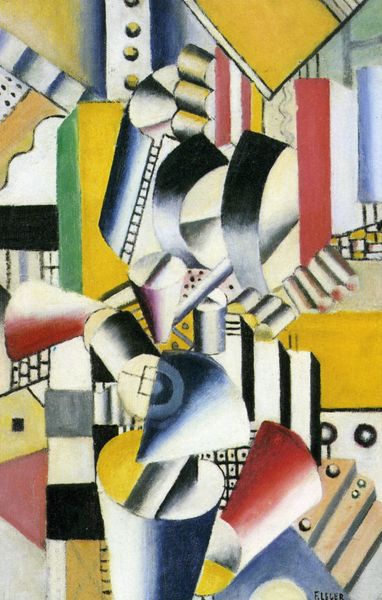
collage, painting, oil-paint
#
art-deco
#
cubism
#
abstract painting
#
collage
#
painting
#
oil-paint
#
landscape
#
house
#
oil painting
#
geometric
#
abstraction
#
cityscape
#
modernism
#
building
Copyright: Public domain US
Curator: Looking at Fernand Léger’s "The House Under the Trees," created in 1913, what's your immediate reaction? Editor: A burst of contained energy! It’s vibrant yet somehow feels still, the geometric forms in dialogue but not quite touching. A pre-war stillness perhaps, on the verge of explosive change. Curator: It's oil on canvas, a key piece from Léger's Cubist period. Notice how he's breaking down the natural world - trees, buildings - into simplified shapes and blocks of color. We see him grappling with industrialization and how that influences how we view, and represent, nature. Editor: Absolutely, the abstraction serves as a commentary, questioning the traditional separation of urban and natural environments. The juxtaposition of organic and geometric forms creates a dynamic tension, suggesting an emerging landscape that’s part machine and part nature. Curator: Léger, influenced by his time as a draughtsman, really emphasizes those solid, almost machine-like, volumes. His use of primary colors highlights this interplay, too, contributing to the overall sense of structure and movement that really breaks free of tradition. Editor: It's as though he’s trying to capture the essence of both the house and the trees, reducing them to their fundamental components. Is he commenting on society’s drive to reduce all things, nature included, to mere objects of consumption or industrial units? Curator: It would seem a fitting conclusion, given his social concerns, yes. The fractured composition, the flattening of perspective, feels almost like an intentional dismantling. An invitation, perhaps, for the viewer to reassemble these elements themselves, hopefully towards more balanced structures. Editor: The radical use of form reflects the broader societal upheavals of the early 20th century. Looking at Léger’s breakdown of traditional art subjects in the painting invites us to confront these changing social realities. It prompts reflection on who holds power and how that power is often symbolized through structure and architectural presentation. Curator: Indeed, this work acts as both document and prompt for critical engagement with the new modern order and our ever-changing environment. Editor: A brilliant distillation of nature through an industrialized, social lens. It is up to us to interpret what the future for both will hold.
Comments
No comments
Be the first to comment and join the conversation on the ultimate creative platform.
